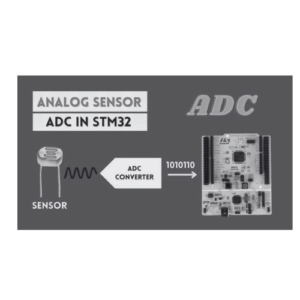Choosing the right processor or microcontroller is a crucial decision in embedded systems design, as it can significantly impact the performance, power consumption, cost, and overall success of your project. This guide will walk you through key considerations to help you make an informed choice.
1. Understand Your Application Requirements
Before diving into specifications and datasheets, start by defining the requirements of your application. Consider the following factors:
- Performance Needs: Determine the processing power required. Are you dealing with simple I/O control, real-time data processing, or complex algorithms like machine learning?
- Power Consumption: For battery-powered or portable devices, power efficiency is critical. Look for low-power modes and power management features.
- Cost Constraints: Balance your budget with the performance and features needed. Higher-performance processors typically come at a higher cost.
- Size and Form Factor: Consider the physical size of the processor or microcontroller, especially if you are working with space-constrained designs.
- Environmental Conditions: If your application is intended for harsh environments (extreme temperatures, humidity, vibration), ensure the processor is rated for such conditions.
2. Processor vs. Microcontroller
Choose between a processor and a microcontroller based on your needs:
- Microcontroller (MCU): Best for applications requiring real-time control, such as motor control, sensor interfacing, and simple data processing. They are typically low-cost, have integrated peripherals (ADC, timers, UART, etc.), and are designed for low power consumption.
- Processor (CPU): Suited for more complex tasks, such as running an operating system, high-speed data processing, or applications with advanced graphics or connectivity needs. They usually require external components like memory and storage.
3. Assess Performance Requirements
Performance is often defined by the clock speed (MHz or GHz) and architecture (8-bit, 16-bit, 32-bit, or 64-bit). Consider:
- Core Architecture: 8-bit and 16-bit MCUs are sufficient for simple tasks, while 32-bit MCUs or processors are preferred for more complex applications.
- Clock Speed: A higher clock speed means more processing power but also more power consumption.
- Memory Requirements: Ensure adequate RAM and flash memory for your application. Some MCUs also offer external memory interfaces.
- Throughput and Latency: For real-time applications, ensure the chosen device meets your required data throughput and latency specifications.
4. Check Peripheral Support
Peripherals are a crucial aspect of microcontroller design. Look for:
- Analog and Digital Interfaces: ADCs, DACs, GPIOs, UARTs, I2C, SPI, CAN, USB, Ethernet, etc.
- Timers and PWM: For precise timing control and signal generation.
- Connectivity: Consider integrated Wi-Fi, Bluetooth, Zigbee, or other communication protocols if your application requires wireless connectivity.
- Security Features: For applications requiring data protection, look for built-in cryptography engines, secure boot, and tamper detection.
5. Power Management
Power consumption is a critical factor, especially for battery-operated devices:
- Low-Power Modes: Look for processors with various power-saving modes (sleep, deep sleep, standby).
- Dynamic Frequency Scaling: Adjusts the clock speed to match performance needs, reducing power consumption during less demanding tasks.
- Voltage Range: Ensure the operating voltage matches your power supply design.
6. Development Ecosystem
The availability of development tools and community support can significantly speed up your design process:
- IDE and Toolchain: Check for the availability of Integrated Development Environments (IDEs) and compilers that support your processor. Popular toolchains include GCC, IAR, and Keil.
- Evaluation Boards: Availability of evaluation or development boards can help prototype and test your design quickly.
- Community and Support: A strong developer community, along with documentation and support from the manufacturer, can be invaluable resources.
7. Scalability and Future-Proofing
Consider the future needs of your application:
- Upgradability: Choose a processor family that allows for easy upgrades within the same architecture to scale performance if needed.
- Longevity: Ensure the manufacturer has a long-term support plan for the processor, particularly for industrial or automotive applications where products have longer life cycles.
8. Evaluate Cost and Availability
Finally, consider the cost and availability of the processor:
- Cost vs. Features: Balance the cost with the features and performance you need. Avoid over-specifying, which can lead to unnecessary expenses.
- Supply Chain: Check the availability and lead times for the processor. Global supply chain issues can impact your production schedules.
In a nutshell,
Choosing the right processor or microcontroller for your embedded system involves a careful evaluation of your application’s requirements, performance needs, peripheral support, power consumption, and development ecosystem. By thoroughly assessing these factors, you can select a processor that meets your needs while keeping costs and power consumption in check.
Remember: There is no one-size-fits-all solution in embedded systems design. The best choice depends on your specific application requirements and constraints.



